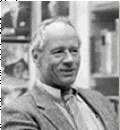At a curious stone tower in Somerville, Massachusetts, panic in 1774 could have sparked a war seven months before Lexington and Concord entered the history books.
In “the cradle of the American Revolution,” loyalists to the Crown faced a harsh choice: live with terrible abuse where they were, or flee to friendlier, but alien regions.
Enlisting an army of alter egos, Adams used the Boston press to make the case for American independence and to orchestrate a burgeoning rebellion.
American Heritage is launching a major effort to research and promote historic taverns from the Founding era.
A comprehensive website about historic taverns is much needed — there’s no info in one place on the Internet.
The American War for Independence was part of an international trend -- a new focus on the individual that inspired people to new insights, new proclamations, and new assertions of rights.
Excerpted from the George Washington Book Prize finalist Revolution Song: A
The young German fought for American independence went home and returned as a man of peace.
Georg Daniel Flohr, a butcher’s son, enlisted at 19 in the Regiment Royal-Deux-Ponts, a German outfit in the service of France, and came to America in 1780 with the Comte de Rochambeau’s army to help the Continentals in their struggle against Great Britain.
A scholar searches across two centuries to discover the main engine of our government’s growth, and reaches a controversial conclusion.
Alexis de Tocqueville observed in 1835 that America had no neighbors and hence no enemies.
After every war in the nation’s history, the military has faced not only calls for demobilization, but new challenges and new opportunities. It is happening again.
Not many people appreciate a military base closing. Like the shutting of a factory, it can devastate nearby towns, throwing thousands of people out of work. Merchants face losses and even bankruptcy as sales fall off.
The American Revolution was in fact a bitter civil war, and a remarkable book offers us perhaps the most intimate picture we have of what it was like for the ordinary people who got caught in its terrible machinery.
What was the American Revolution really like, for real homes and real families caught up in its hardships and dangers?
From Newport to Yorktown and the battle that won the war: A German foot soldier who fought for American independence tells all about it in a newly discovered memoir.
When their side lost the Revolution, New Englanders who had backed Britain packed up, sailed north, and established the town of St. Andrews, New Brunswick. It still flourishes.
When, in 1783, it became clear that a band of American rebels had succeeded in their insurrection against King George, Robert Pagan and 443 of his neighbors in Castine, Maine did the only thing loyal subjects of the Crown could do: they dismantled their houses and pubs, board b
To the end of his life, America’s most notorious traitor believed that he was a primary hero of the Revolution.
Shortly after noon on Thursday, April 20, 1775, a weary post-rider swung out of the saddle at Hunt’s Tavern in New Haven, Connecticut with an urgent message from the Massachusetts Committee of Correspondence.
The little town of Lebanon, Connecticut played a larger role in the Revolution than Williamsburg, Virginia did. And it’s all still there.
Natives of eastern Connecticut like to say that, except for Boston and Philadelphia, the village of Lebanon stands first in America in Revolutionary importance.
Thousands of them sided with Great Britain, only to become the wandering children of the American Revolution
IN THE EARLY summer of 1775 the rebeb of Virginia evicted their royalist governor, John Murray, Earl of Dunmore, from his capital at Williamsburg and drove him to refuge aboard a British warship.
The Revolution might have ended much differently for the Americans if it weren’t for their ally, the Spanish governor of Louisiana, who helped them wrestle the Mississippi valley from the British.
Imagine, for a moment, an alternate ending to the American Revolution. The thirteen rebel colonies sign a peace of exhaustion with Great Britain in 1783.
George Washington’s Narrow Escapes
Everything depended on a French fleet leaving the Indies on time; two American armies meeting in Virginia on time; a French fleet beating a British fleet; a French army getting along with an American one; and a British general staying put.
Encamped above the Hudson for the last, hard winter of the Revolution, the officers of the Continental Army began to talk mutiny. It would be up to their harried commander to defend the most precious principle of the infant nation—the supremacy of civilian rule .
Sunday, October 27, 1782. Mist and intermittent sheets of cold rain shrouded the granite spine of Butter Hill as it stretched west from the Hudson River above West Point toward the distant Shawangunk mountain range.
Saluting a departing general, the British dazzled Philadelphians with the grandest party the city had ever seen; the tiny army that had toppled the general bided its time nearby
In the spring of 1778 William Howe, commander in chief of His Majesty’s forces in North America, received orders to return to London and justify his actions, or rather his inactions, for he had gained no conspicuous victory in three years of war.
He was Irish, but with neither the proverbial charm nor the luck. Generals are not much known for the former quality, but the latter, as Napoleon suggested, is one no successful commander can be without. And John Sullivan was an officer whom luck simply passed by.
He was Irish, but with neither the proverbial charm nor the luck. Generals are not much known for the former quality, but the latter, as Napoleon suggested, is one no successful commander can be without. And John Sullivan was an officer whom luck simply passed by.
Newly Discovered Eyewitness Accounts of the War for Independence
Although it has been disparaged as “General Washington’s Sewing Circle,” this venture was the first nationwide female organization in America
When news that the British had taken Charleston, South Carolina, reached Philadelphia in May of 1780, merchants and government officials reacted to the disaster by taking steps to support the inflated Pennsylvania currency and solicit funds to pay new army re
A few years back a Massachusetts hardware salesman named Stuart Goldman bought a trunk which, he believed, had been sealed since 1799. When he opened it, he found the crisp silhouette of the Continental officer at left.
One reason most Americans find greater immediacy in the Civil War than in the Revolution is that the camera came into being during the eighty-odd years between the two conflicts.
and how, a decade after the Revolution, a melodramatic rescue attempt, involving a grateful young American, went awry
Early on the afternoon of June 13, 1777, a French vessel slipped into an isolated inlet on the coast of South Carolina and dropped anchor.
It is normally the winners, not the losers, who erect triumphal irches at a war’s end.
Eleventh in a series of paintings for AMERICAN HERITAGE
When in June of 1778 Sir Henry Clinton evacuated Philadelphia and moved his army of ten thousand British and German troops toward New York, Washington called his officers together to discuss strategy.
Like many another well-to-do young man of his day, Joseph Reed seems an unlikely revolutionist. His background, money, education, marriage—all these, one would suppose, would have placed him firmly on the side of the status quo, kept him loyal to the Crown.
Courtly, gallant, handsome, and bold, John Laurens seemed the perfect citizen-soldier of the Revolution. But why did he have to seek death so assiduously?
How a nation regards its past is itself a fact of considerable historical significance, and it will be interesting to observe the treatment of the Founding Fathers during the Bicentennial celebration.





